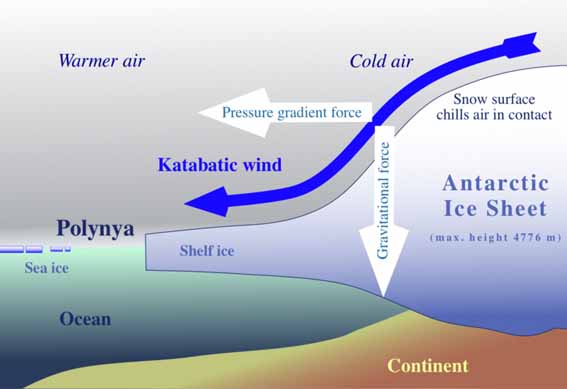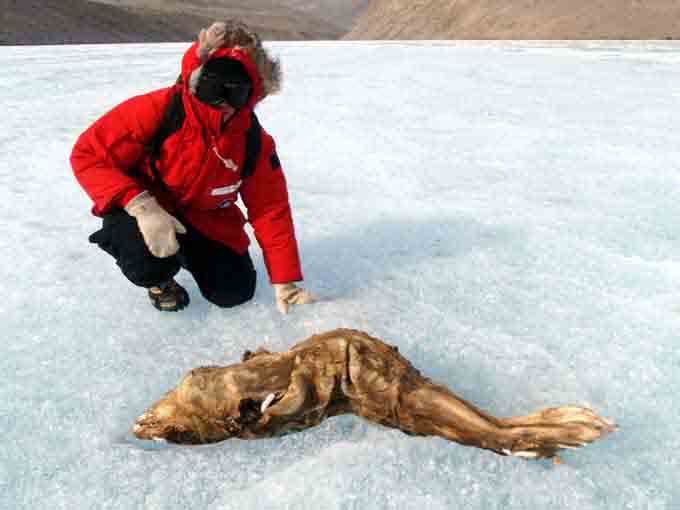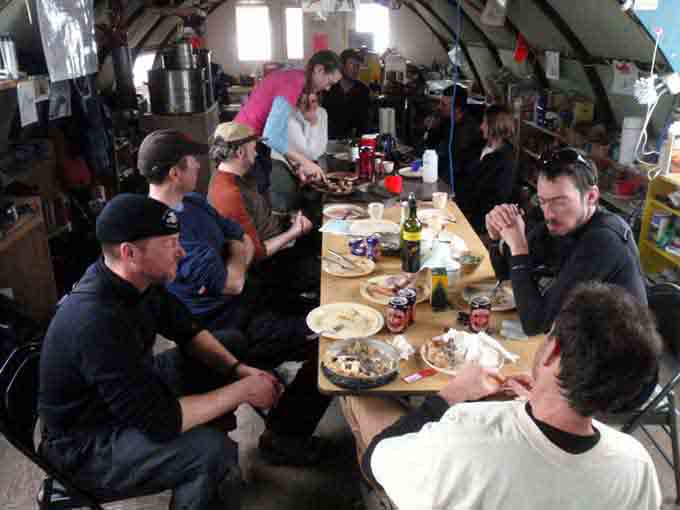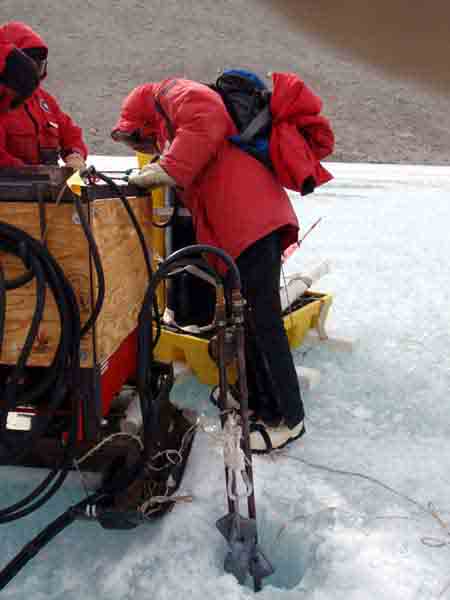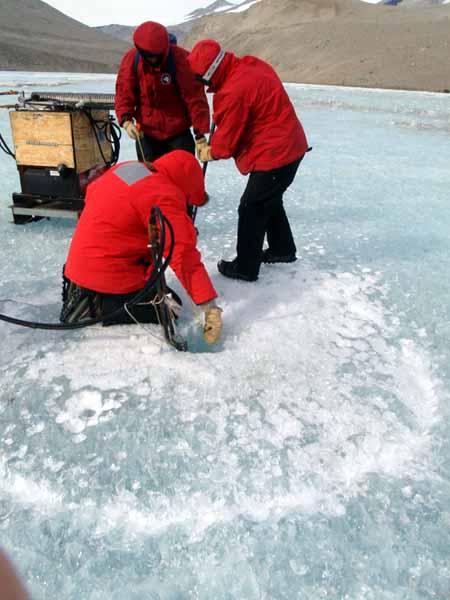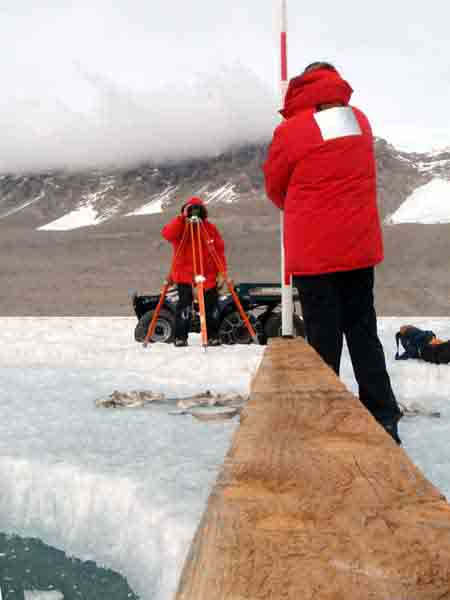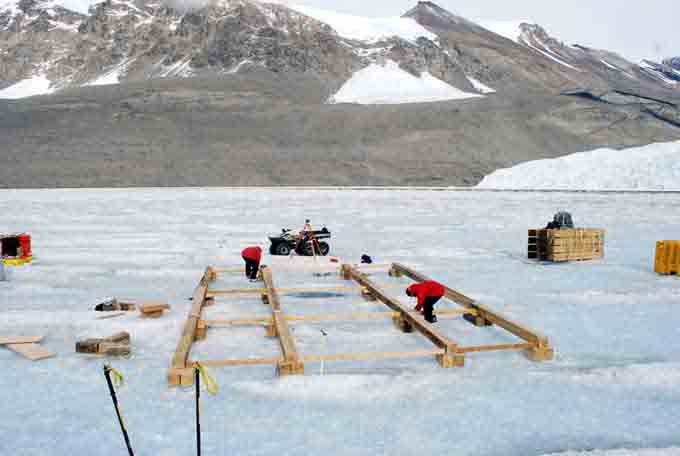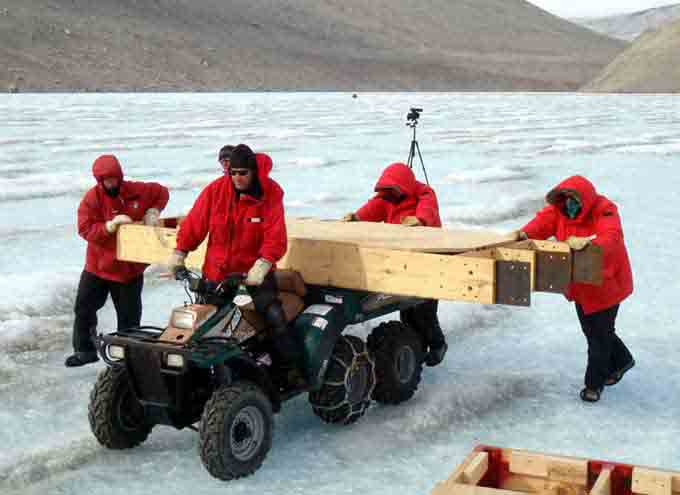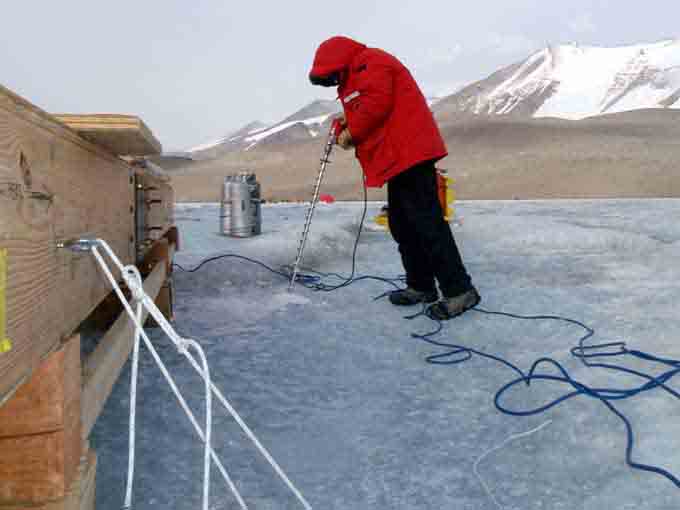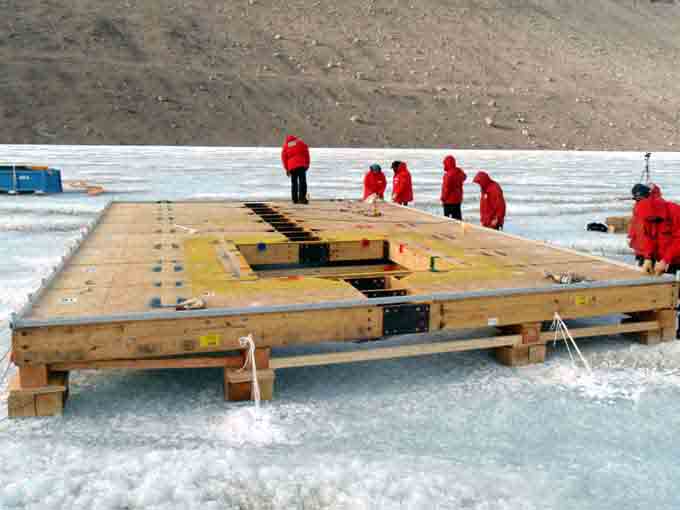West Lake Bonney, Taylor Valley, Antarctica
Reporting from Blood Falls Basecamp
In accordance with our hopes, the winds died down enough by this morning that helos were flying today. In addition to the much-anticipated delivery of the bot, we were expecting several other sling loads, including the final bits of plywood for the bot house floor and the roll-away cover for the melt hole, now referred to as the moon pool. These items arrived first thing in the morning and we wasted no time getting everything in place. The next sling load to come over the horizon was a black oval with yellow feet and flame-decaled yellow fins. Everyone scurried to pull out their cameras and hunker down behind the various large shipping crates that are scattered around the platform. With a 2000 lb sling load, a Bell 212 helo creates a tremendous amount of rotor wash and certainly a lot of noise. The physical turbulence made the emotional rush of seeing the pilot set the bot squarely down on the platform all the more exhilarating. The pilot unclipped the cable and thundered off. Now it was time to get to work.
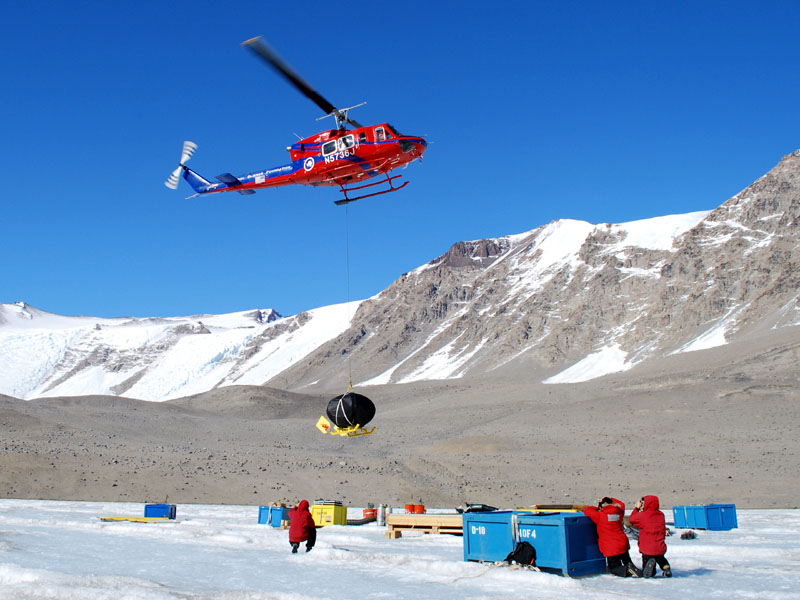
We look on nervously as the helo lowers the bot onto our Bot House platform.
The next step on our agenda was to build the polar haven tent structure of the Bot House around the bot. We learned the procedure in McMurdo: assemble the pipe arches and walls that make up the frame of the haven; pull the insulated blankets (tarps) on the end walls; pull a liner tarp over the arches and tie it down to the floor on either side; on top of this go insulating layers over the arches; and then finally a large, weather resistant cover goes over it all. Our entire practice run in McMurdo took six hours.
Things started off well enough. Though it was slightly breezy, we made quick process in constructing the pipe frame. Two people worked from the top of some scaffolding and the rest scrambled around arranging pipes and fitting them together. Over the course of the afternoon the wind began to build, but in our concern to get a shelter built over the bot we didn’t take much notice—yet. Once the frame was together we pulled out the liner tarp and prepared to install it on the 16-foot-tall frame. We lined the tarp up on the ground along one side of the arches and tied ropes to one edge of the fabric. Then we threw the other end of each rope over the entire frame to people standing on the other side of the structure. Half of the team pulls the ropes to drag the tarp up and over the arches while the other half feeds the tarp up and manages any snags that occur. This is when we really noticed the wind. We were trying to pull the tarp from the upwind side of the structure to the downwind but the force from the wind meant that the tarp simply pressed against the pipe frame with enough pressure that it was incredibly difficult to drag it up to the peak and over. Once we did get it over the top, everything got worse. With no wall to press into, the downwind end of the tarp whipped up violently against the four ropes we had tied to it. It became a sail. Helpers jumped in to assist the rope haulers, who were nearly being whisked away on the ends of their ropes. The points where we had tied the ropes on the tarp began to rip through, giving the raging beast a greater range for its erratic motions. With the whipping and cracking of the tarp, the gusting wind, and our layers of hats and hoods, shouts and instructions were snuffed out. This was the stuff of epic sea chanteys, not field robotics. Somehow we managed to tie down, at least marginally, both sides of the tarp. Worried that the liner tarp would rip further unless we put up the end wall tarps quickly, we plunged into this next struggle. By now we had been working on the tent for about eight hours. After some time spent fighting more of the same battle with the first end wall, Peter made the call that we were in a losing battle; the wind was just too strong. The rest wearily agreed and after the equally arduous task of removing the tarps from the frame and corralling the unruly masses of fabric back into boxes for the night we dragged ourselves back to camp. Sometimes it’s just best to try again tomorrow.
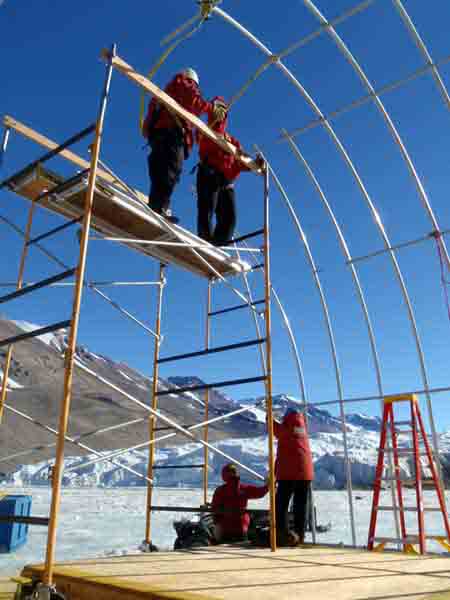
Members of the team work together to construct the final pipe arches (there are 17 total) of the tent frame.
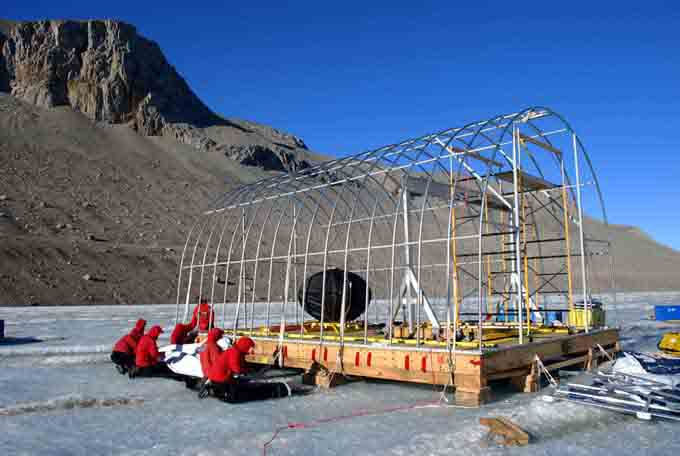
With the frame completed we begin to unroll the liner tarp on the up wind side of the structure. We plan to tie ropes to one edge and pull it over the frame to tie off on the downwind side.

This quick photo, the only one snapped during our epic battle, does little to convey the chaos of the gusting wind and the tarp that threatened to carry us all away.
Reporting by Vickie Siegel
